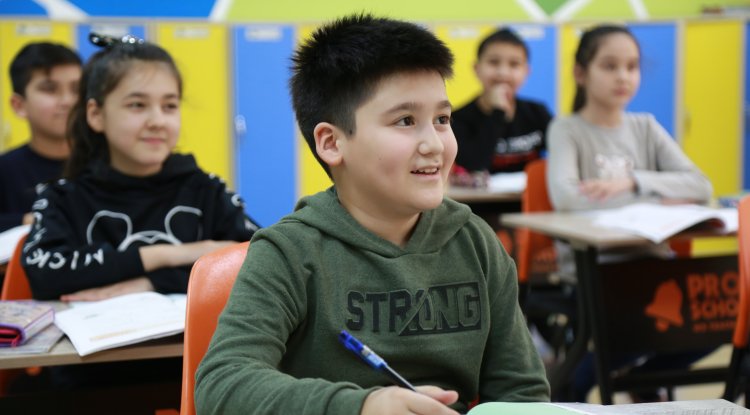Tips for Educators
3 Tips To Apply Classical Conditioning In Classrooms
- Apr 25, 2022
- 0
- 21444

Remember those teachers who could create pin-drop silence in the classroom simply by walking in? On the other side of the spectrum, we’ve got teachers who find it difficult to control a noisy classroom, no matter how many times they bang their dusters on the table. What’s the difference between these two teachers? Why do students react differently with both of them? The concept of classical conditioning will help you understand the answers to both questions. Let’s explore this further.
What is Classical Conditioning?
Classical conditioning is a concept where a neutral stimulus elicits a naturally occurring reflex. Pavlov's experiment with his dogs is an iconic example of classical conditioning. In this experiment, Pavlov noticed his dogs began salivating before their meals, but this was not a natural response caused by their hunger; it was caused by the fact that Pavlov always rang a little bell before giving the dogs their meal. Hence, every time the dogs heard the bell, they knew food was on its way and they got excited. In this case; the neutral stimulus is the ringing of the bell and the naturally occurring reflex is the dogs salivating. This reflex, in fact, is commonly seen in students as well. But how?
Imagine if a group of children have math class everyday before lunch break. Towards the end of the class, students begin feeling hungry, since they know they will be able to eat their lunch after the class ends. Eventually, students might associate hunger with their math class! This is because of classical conditioning. In this situation, we can see the stimuli and responses of the students as follows -
- Neutral stimulus (NS): After math class
- Unconditional stimulus (US): Eating lunch
- Unconditional response (UR): Feeling hungry
- Conditional stimulus (CS): Math class
- Conditional response (CR): Feeling hungry
Here’s a table to guide you through the process of classical conditioning in the classroom -
| If the teacher... | Then the students... | |
| Before conditioning |
Counts down from twenty |
Will not clean up. Will clean up. |
| During conditioning | Tells the class to clean up and counts down from twenty | Will clean up. |
| After conditioning | Counts down from twenty | Will clean up. |
Applying Classical Conditioning in Classrooms
A classroom has a variety of students, which can include star kids who know all the answers, class clowns who love making jokes to entertain their peers and even silent ones who know the answers, but are too shy to come out of their shells. With a dynamic mix of students like this, is it possible to apply a classical conditioning method that works with all of them? Yes, it is!
Here are three examples of classical conditioning that you can use in your classroom:

1. Reward Positive Behaviour
As a teacher, when you reward positive behaviour in class, it naturally incentivises students to inculcate good habits. For example, when a child gets an "A" on a test, they can be rewarded with a sticker or a candy bar. This way, while students are focused on getting the reward, they subconsciously end up studying for the test they once dreaded.
2. Answer Cueing
Answer cueing is a great way to establish a system that helps students answer questions in class. Generally speaking, high-performing students tend to blurt out the right answers as soon as the question is asked. This means the other students don’t get a chance to participate in the discussion, thus lowering their attention spans. To prevent this from happening, you could raise your hands up while asking the question, keep them up for an extra few seconds, and then bring them down, indicating that students are now allowed to answer the question.
3. Maintaining Discipline
One way to ensure students are disciplined is to enforce a practice such as the "three clap technique" – the teacher claps thrice and the class falls silent. If a student violates that rule, they can be punished with a time-out or extra homework. No one likes extra homework, so students will become more alert and quiet down as soon as they hear you clapping.
Classical conditioning is useful in many ways for teachers and students alike. By applying such techniques in the classroom, teachers will be able to improve classroom instruction and behaviour management to a great degree.
Add Comment
Related Blogs

Tips for Educators
9 Tips to Correct Students the Right Way in Classrooms
- Khushboo M...
- Aug 26, 2022
- 0
- 2460

Tips for Educators
A Quick Guide To Understanding Mastery-Based Learning
- James Coop...
- Jun 20, 2022
- 0
- 1636

Tips for Educators
6 Foolproof Ways To Create A Desire To Learn In Students
- Natasha Di...
- Mar 1, 2022
- 0
- 4201
Popular Blogs

Tips for Educators
3 Tips To Apply Classical Conditioning In Classrooms
- Natasha Di...
- Apr 25, 2022
- 0
- 21444

Understanding Concepts
4 Reasons Why Skill-Based Learning Is Important For Students
- James Coop...
- Mar 14, 2022
- 0
- 10957

For Parents
Everything You Need To Know About STEAM Education As A Parent
- James Coop...
- Mar 1, 2022
- 0
- 10728










